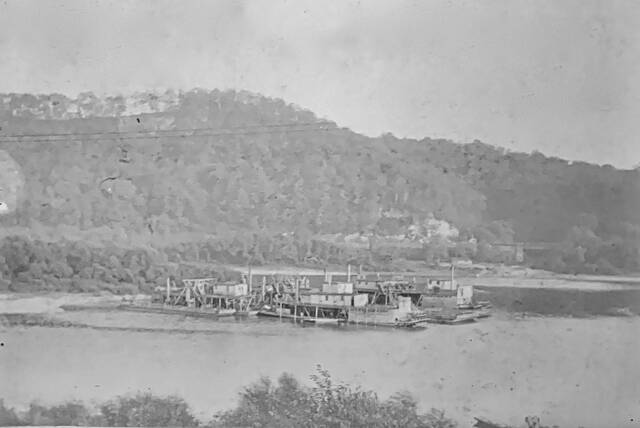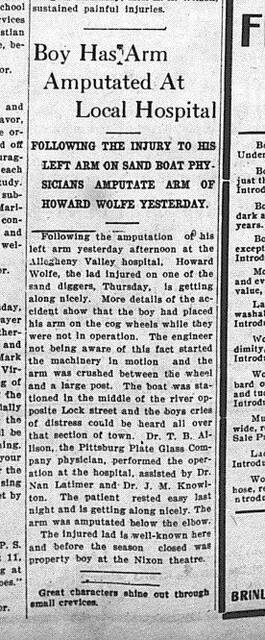Remember When: Long-gone Hairs Island once served a vital role in transportation issues
Before 1910, there was a large island in the Allegheny River between Lower Burrell and Tarentum. It ran from the Braeburn area downriver to the site of the present Tarentum Bridge.
The island was named Hairs Island on early maps and was sometimes referred to as Tarentum Island in old newspaper articles.
The island first was mentioned in the diary of Frederick Post, an early explorer and missionary who visited the area in 1758. He described it as “an island of about 100 acres, very rich land, well timbered.”
The island later was home to a farm and, most likely, took the name of the family that settled there.
With transportation looking much different in those days, the island played a major role in how people crossed the Allegheny River.
After 1850, two railroad lines serviced the Allegheny Valley. One ran from the Union Station in Downtown Pittsburgh along the Lower Burrell side of the river. The second ran from Pittsburgh’s North Side, then known as Allegheny City, along the Tarentum side of the river.
Passengers traveling from Downtown Pittsburgh who wished to visit Tarentum had to exit the train and take a ferry across the river.
In those days, Craigdell Road in Lower Burrell extended to the Allegheny River. The remains of this portion of the road still can be seen behind the Giant Eagle on Tarentum Bridge Road.
A train station was built along the river at the base of Craigdell Road for passengers wishing to take the ferry to Tarentum. This station was named Tarentum Station. At the time, there actually were two Tarentum stations, one in Lower Burrell and one in Tarentum.
Passengers exiting the train at the base of Craigdell Road could take a ferry to Hairs Island, then walk across the island and board a second ferry to take them from the island to Tarentum. The water was too shallow at the downstream tip of the island for a single ferry to go around it.
In later years, knowing of the shallow water, the Tarentum YMCA would ferry children to the island for swimming lessons . During its existence, Hairs Island also was a popular picnic spot for local residents.
Beginning in 1910, Pittsburgh Plate Glass Co. acquired the island and began to dredge it for sand to be used in the making of glass. The process took several years.
The five-man crew who worked on the dredger were cousins. Howard Wolfe, a member of the crew, lost his left arm in an accident aboard a sand digger in May 1911.
In the late 1920s, the Army Corps of Engineers began constructing locks and dams on the Allegheny River for navigational purposes. With that, the river levels rose, and the last vestiges of Hairs Island disappeared beneath the waters.
Ray Rieser is a freelance writer.
Remove the ads from your TribLIVE reading experience but still support the journalists who create the content with TribLIVE Ad-Free.




